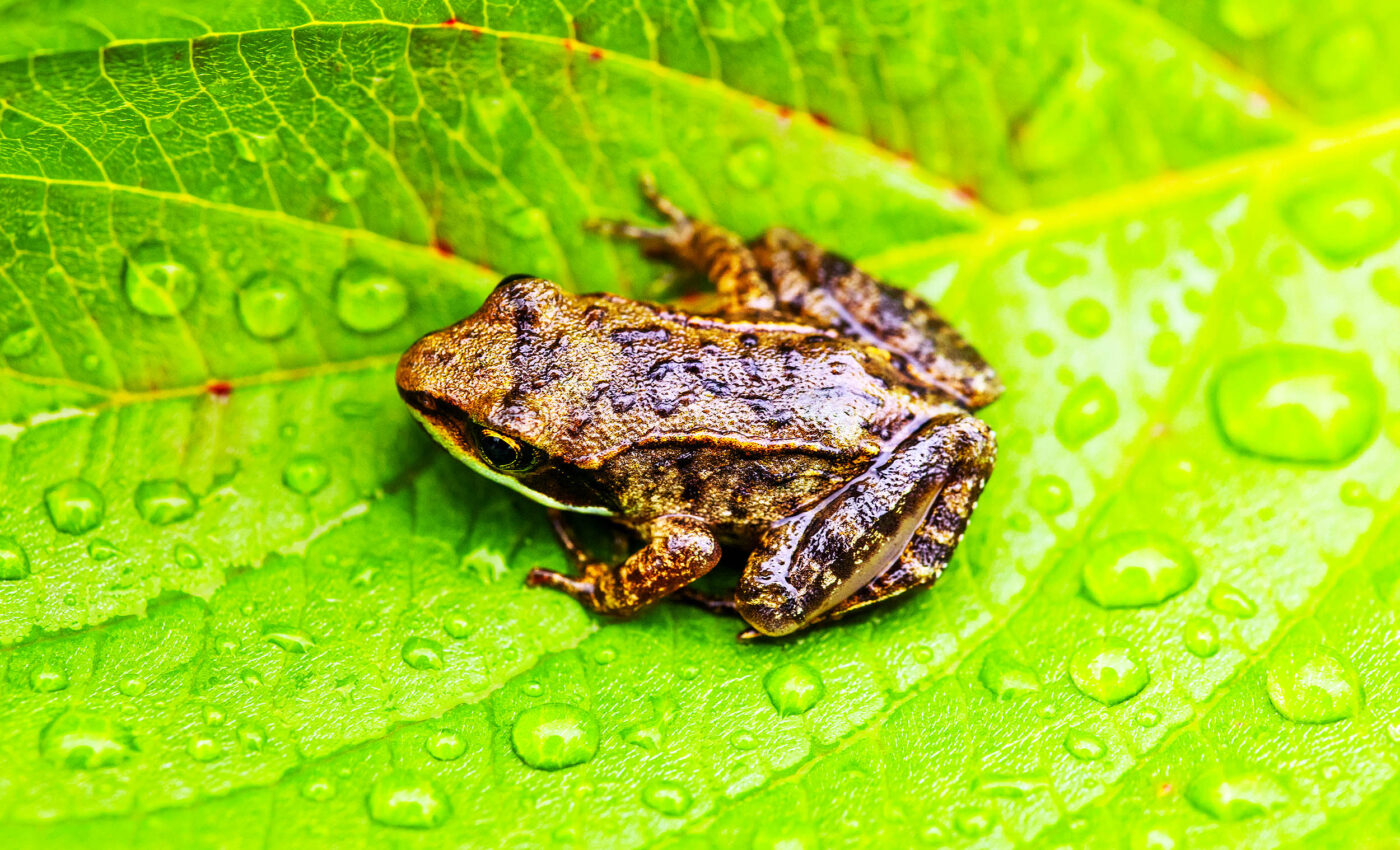
Brazilian flea toad: World's smallest vertebrate is incredibly tiny
Deep within Brazil’s lush rainforests, scientists recently made a discovery that has left them astonished: a minuscule creature called the “Brazilian flea toad.” This tiny amphibian, barely bigger than a pea, holds the incredible title of the world’s smallest vertebrate.
Finding this little wonder wasn’t easy. It took diligent exploration by biologists from the Universidade Estadual de Santa Cruz in the biodiverse landscapes of southern Brazil.
Discovery and research
In 2011, the researchers went exploring in the southern part of Bahia, Brazil. They came across a creature so unbelievably small they initially thought it might be a new type of toad.
The confusion stemmed from its resemblance to a toad. Frogs and toads, while both amphibians, have distinct characteristics.
Toads typically have drier, bumpier skin and favor dry environments, while frogs boast smoother, moister skin and inhabit areas near water. This tiny creature, despite its toad-like traits, sparked further investigation.
Brazilian flea toad is not a toad
Recent closer examination revealed a surprising truth: this wasn’t a toad, but a frog. This distinction holds immense significance for scientists, as it sheds light on the different ecological roles, behaviors, and evolutionary paths of these two groups.
Adding to the intrigue, the newly identified frog species, now known as the Brazilian flea toad (Brachycephalus pulex), displayed highly unique characteristics.
Size and physical appearance
The most impressive feature of the Brachycephalus pulex frog is its incredibly small size. Male frogs of this species have an average body length of just a bit more than seven millimeters (that’s about a quarter of an inch!).
Females are slightly larger, averaging about one millimeter longer than males. The smallest flea toad ever found was a tiny 6.45 millimeters long, even smaller than some insects.
This size is so small that two adult Brachycephalus pulex frogs could comfortably sit side-by-side on the tip of your pinky fingernail.
Coloration and skin of the flea toad
The Brazilian flea toad stands out with its bright yellow-orange color, which scientists believe is a warning signal to predators.
This “look, but don’t touch” strategy, known as aposematism, is common among other members of the tiny species family.
Their skin might actually contain toxins that make them unpleasant or even dangerous to eat, discouraging hungry animals from taking a bite.
Interestingly, despite being called a “toad,” the flea toad’s skin is actually smoother than the bumpy, rough skin you might expect. Instead, it’s similar to the smoother skin of its frog cousins.
Habitat and distribution
The tiny frog is only found on a few tiny hills in the southern part of Bahia. This very specific preference for a particular kind of place makes them quite vulnerable if anything happens to their environment.
The flea toads evolved to fit in with these specific hills. Scientists think they might be used to a very particular set of tiny weather conditions and plants that only grow in this special spot. So, if anything changes there, it could be bad news for these little frogs.
This limited range makes them what scientists call “endemic,” meaning they’re stuck to one tiny area and can’t really live anywhere else. It’s a risky adaptation.
Anatomical adaptations
Being so incredibly small, flea toads have evolved with some unique characteristics. For example, they have fewer toes than most frogs, which scientists think might be because of their small size.
Some of them even have ears that haven’t fully developed, which could mean they can’t hear very well.
These traits make scientists wonder how flea toads manage to talk to each other, find mates, and just live their lives in general. It’s a scientific mystery waiting to be solved.
Conservation and future research
The discovery is a significant scientific achievement. However, it also carries a crucial message for conservation efforts, particularly in biodiversity hotspots like southern Brazil.
Further research will likely explore the Brachycephalus pulex’s ecological function, behavioral patterns, and evolutionary history, offering deeper insights into the life of this remarkable creature.
The scientists are also driven to investigate other remote, biodiverse regions, where undiscovered species might hold new records and expand our understanding of life’s astonishing diversity.
All of the findings are published in the journal Zoologica Scripta.
—–
Like what you read? Subscribe to our newsletter for engaging articles, exclusive content, and the latest updates.
—–
Check us out on EarthSnap, a free app brought to you by Eric Ralls and Earth.com.
—–













